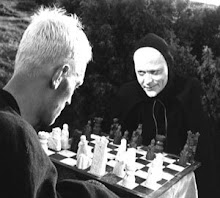"" The Bukowski exhibit, which is organized roughly chronologically, includes photos, letters, drafts and redrafts of his writing, first editions, original artwork, foreign translations, movie memorabilia and other ephemera, including a racing form.
" was his sanctuary, and this was mine," Linda Lee Bukowski, his widow, said of the Huntington. When Bukowski was gambling at the track in nearby Arcadia, she visited the library and gardens.
She arranged for his papers to come to the institution and saw the exhibit for the first time Friday.
"It's surrealistic," she said. In the foyer, in a class case, sit Bukowski's typewriter, wine glass, pens and boom box, a little dingy, arranged just as they were in his office. Linda Lee Bukowski explained that she's left his office just as it was, going in twice a year to dust. "It's like home," she said, looking at the case. "I'm walking into this room at the Huntington, and it's like home."
Charles Bukowski's first publication, in Story magazine in 1944, was titled "Aftermath of a Lengthy Rejection Slip." That theme -- of the outsider, the loser -- would continue as a thread through his work."""
Santa Anita-o-nomics, baby.
***** ***** ***** *****
"Crime belongs to the concept "revolt against the social order." One does not "punish" a rebel: one suppresses him. A rebel can be a miserable and contemptible man; but there is nothing contemptible in a revolt as such — and to be a rebel in view of contemporary society does not in itself lower the value of a man. There are even cases in which one might have to honor a rebel, because he finds something in our society against which war ought to be waged — he awakens us from our slumber." (Nietzsche, Will to Power).


No comments:
Post a Comment